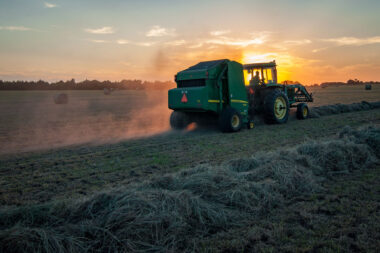Introduction
The Industrial Internet of Things (IIoT) relies on ubiquitous sensing, seamless connectivity, and intelligent data processing to digitize industrial operations. Wireless Sensor Networks (WSNs), composed of spatially distributed sensor nodes, provide the foundational layer for data acquisition in IIoT environments. They eliminate the constraints of wired systems, offer greater flexibility, and significantly reduce deployment and maintenance costs. This article explores the design, implementation, and optimization of WSNs tailored for IIoT use cases.
Architecture of Wireless Sensor Networks in IIoT
A WSN for IIoT typically follows a multi-tiered hierarchical structure to ensure efficient communication, processing, and scalability.
Node Layer
- Comprises sensor nodes equipped with:
- Sensing Modules: Temperature, vibration, gas, humidity, pressure, and chemical sensors
- Processing Units: Microcontrollers (e.g., STM32, ESP32)
- Communication Interfaces: RF transceivers (IEEE 802.15.4, BLE, Sub-GHz)
- Power Modules: Battery or energy-harvesting systems
Cluster Head Layer
- Aggregates data from multiple nodes in the same region.
- Performs preprocessing and forwards data to base stations.
- Often equipped with higher processing capabilities and longer-range radios.
Gateway/Base Station Layer
- Connects WSNs to external IIoT platforms or cloud services.
- Provides protocol translation, buffering, and sometimes local storage.
- Interfaces via Ethernet, Wi-Fi, or cellular (4G/5G) to the cloud.
Cloud/Edge Layer
- Hosts applications for analytics, dashboards, and machine learning.
- Manages device registration, security, and configuration updates.
- Performs long-term data storage and model training.
Sensing and Node Components
| Component | Description |
|---|---|
| Microcontroller | Low-power processors (ARM Cortex-M, RISC-V MCUs) for local computation |
| Sensor Types | Vibration (ADXL345), Temp/Humidity (BME280), Gas (MQ-135), Pressure (BMP180) |
| Wireless Modules | Zigbee (XBee), LoRa (SX1276), BLE (nRF52832), Wi-Fi (ESP32) |
| Energy Sources | Lithium-ion batteries, supercapacitors, solar panels, piezoelectric harvesters |
Communication Protocols
| Protocol | Description | Typical Use Case |
|---|---|---|
| Zigbee | IEEE 802.15.4-based, supports mesh networking | Low-power industrial monitoring |
| 6LoWPAN | IPv6 over low-power wireless personal area networks | IP-native WSN deployment |
| LoRa/LoRaWAN | Long-range, low-power communication in unlicensed spectrum | Remote site monitoring |
| Bluetooth Low Energy (BLE) | Short-range, energy-efficient communication | Wearables, equipment telemetry |
| Wi-Fi | High throughput, higher power consumption | Video/audio-based applications |
| NB-IoT | Cellular LPWAN for massive device connectivity | Utility metering, smart grids |
Deployment Methodology
Step 1: Site Survey and Planning
- Identify monitoring points and environmental challenges.
- Map sensor node positions considering interference and signal strength.
Step 2: Node Design and Configuration
- Choose sensors based on target variables.
- Configure microcontroller sampling rates, sleep/wake cycles, and power profiles.
Step 3: Network Topology Selection
- Options: Star, Tree, Mesh, Clustered Mesh
- Considerations: redundancy, data rate, power consumption, scalability
Step 4: Communication Setup
- Assign frequencies and addresses to prevent collisions.
- Configure duty cycling and adaptive transmission power for energy efficiency.
Step 5: Gateway Integration
- Install industrial gateway(s) to relay sensor data to cloud platforms or SCADA.
- Enable protocol converters (e.g., Modbus-to-MQTT) if necessary.
Step 6: Edge/Cloud Integration
- Deploy edge nodes for real-time analytics and threshold-based alerting.
- Use cloud services for model training, long-term storage, and dashboard visualization.
Applications of WSNs in IIoT
- Predictive Maintenance: Vibration sensors monitor rotating machinery for early fault detection.
- Environmental Monitoring: Air quality, temperature, and humidity sensors used in clean rooms, chemical processing, and storage facilities.
- Energy Management: Current and voltage sensors provide real-time power usage data for optimization.
- Asset Tracking: RFID or BLE beacons help track tools, inventory, and mobile assets.
- Smart Agriculture & Industrial Greenhouses: Soil moisture and ambient conditions tracked wirelessly.
Enabling Technologies
Edge AI
- Deployment of lightweight machine learning models on cluster heads or gateways.
- Models perform anomaly detection, equipment status classification, or failure prediction.
Energy Harvesting
- Thermoelectric, photovoltaic, and piezoelectric generators allow battery-less nodes.
- Enables long-term sustainability in hard-to-reach areas.
Network Optimization Algorithms
- Dynamic clustering (e.g., LEACH protocol), load balancing, and mobility-aware routing improve WSN efficiency.
Over-the-Air Programming (OTA)
- Enables remote updates of node firmware and configurations without physical access.
Future Trends
- Self-Healing Networks: Nodes dynamically reconfigure in response to failures.
- Federated Learning: Distributed learning across sensor clusters without data centralization.
- Hybrid WSN Architectures: Integration of WSNs with 5G/6G and Time-Sensitive Networking (TSN).
- Cognitive Radio for WSNs: Intelligent spectrum selection for interference mitigation.
Conclusion
Wireless Sensor Networks form the backbone of data acquisition in IIoT systems, enabling continuous, flexible, and intelligent monitoring of complex industrial environments. Their integration with edge computing, energy harvesting, and advanced communication protocols ensures that WSNs remain a key enabler of smart factories and digitalized production. The evolution of WSNs towards more adaptive, secure, and scalable configurations will continue to push the boundaries of industrial automation and efficiency.



